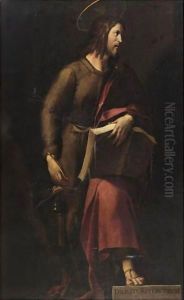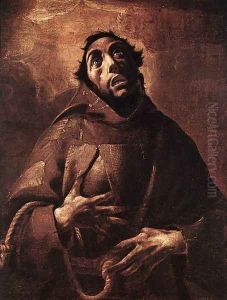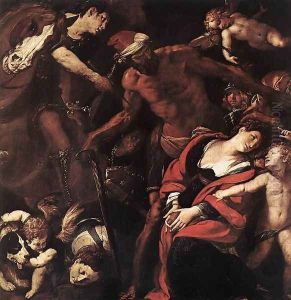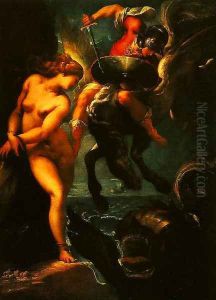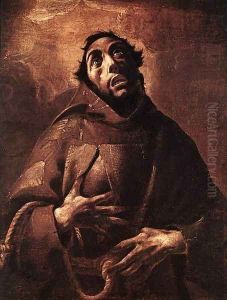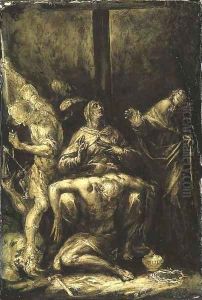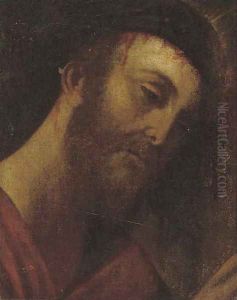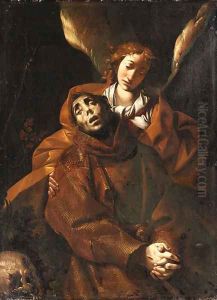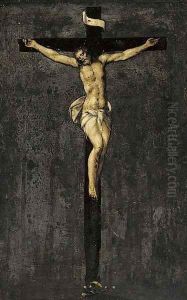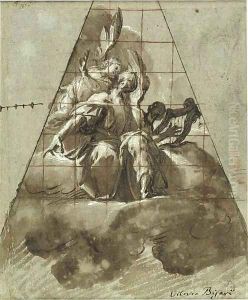Pier Francesco Mazzuchelli (see Morazzone) Paintings
Pier Francesco Mazzuchelli, better known as il Morazzone, was an Italian painter and draughtsman active during the late Renaissance period, specifically in the early Baroque era. He was born in 1573 in Morazzone, a small town in the province of Varese in Lombardy, from which he derived his nickname 'il Morazzone'.
Morazzone's early training is not well-documented, but it is believed that he may have been a pupil of Simone Peterzano, who also taught the illustrious Caravaggio. His style, however, suggests that he might have been influenced by the works of other Lombard painters, such as Camillo Procaccini and Giulio Cesare Procaccini, and the Venetian tradition, particularly the work of Paolo Veronese.
Morazzone's works are characterized by dramatic expressions, vigorous movements, and a bold use of color, which shows the transition from Mannerism to the more dynamic and realistic Baroque style. He was particularly known for his religious paintings, which include altarpieces, frescoes, and smaller devotional images. One of his most significant works is the series of frescoes in the Sanctuary of the Madonna dei Miracoli in Saronno, where he collaborated with other prominent artists such as Giulio Cesare Procaccini and Il Cerano.
In addition to religious works, Morazzone also painted mythological subjects and was involved in decorative projects for private patrons. His career was mostly spent in Lombardy, although he also worked in Genoa and Piacenza. Morazzone's contribution to the Italian Baroque movement was significant, and his works played a part in shaping the visual culture of the period.
Despite his success, his life was marked by tragedy. Morazzone's son, who was also his pupil, was reportedly involved in a scandal that led to his execution. The event deeply affected the artist, and some scholars suggest that it influenced the emotional intensity of his later works.
Pier Francesco Mazzuchelli il Morazzone died in 1626, leaving behind a body of work that continues to be appreciated for its vibrant energy and contribution to the Baroque style. Although not as widely recognized as some of his contemporaries, Morazzone's work is studied for its artistic merit and historical significance within the transition from Renaissance to Baroque art.
